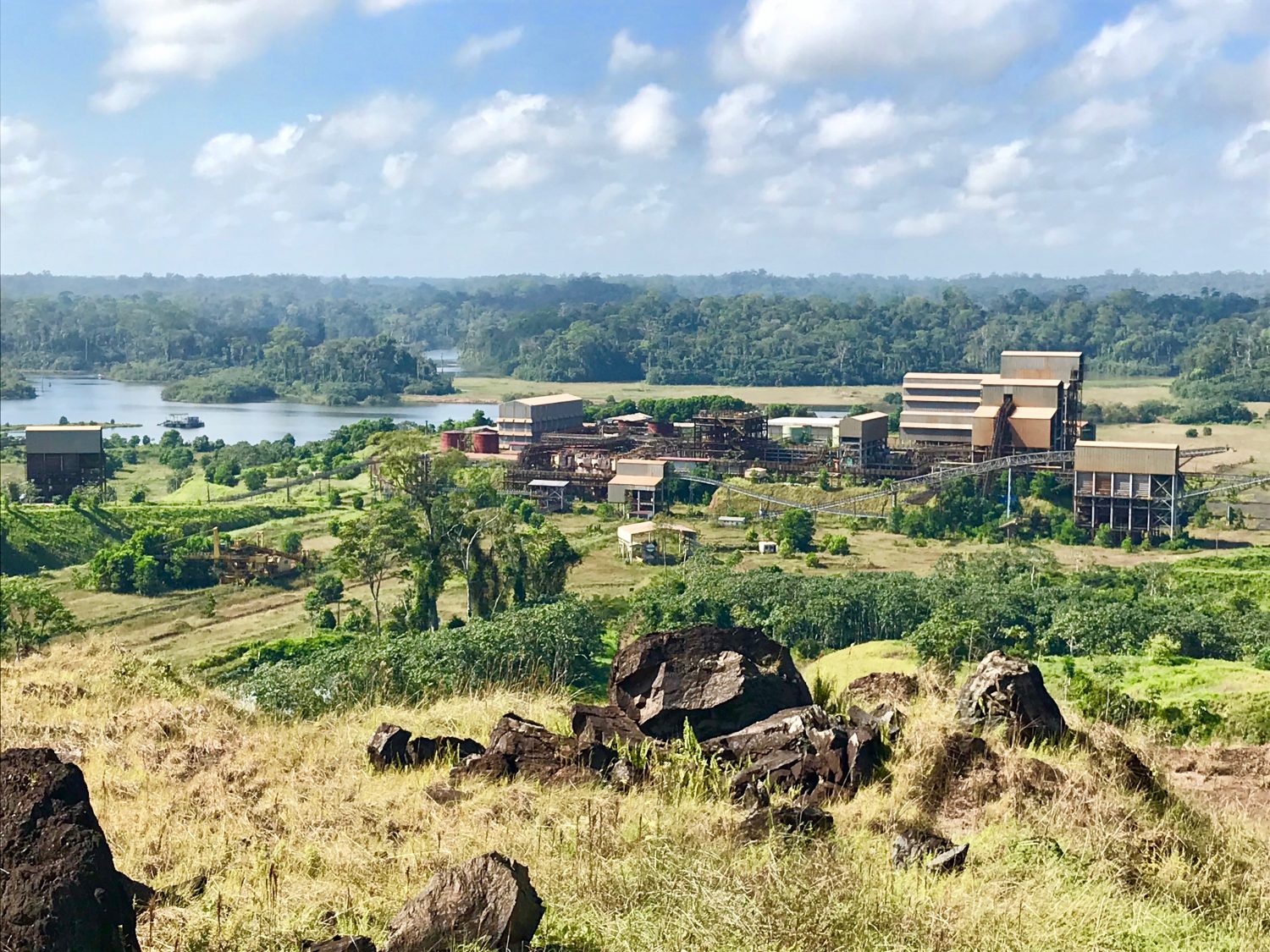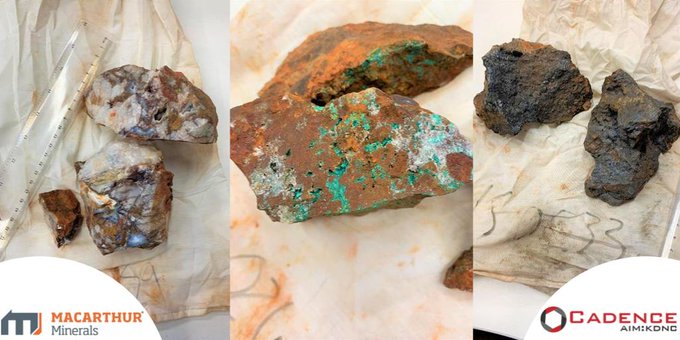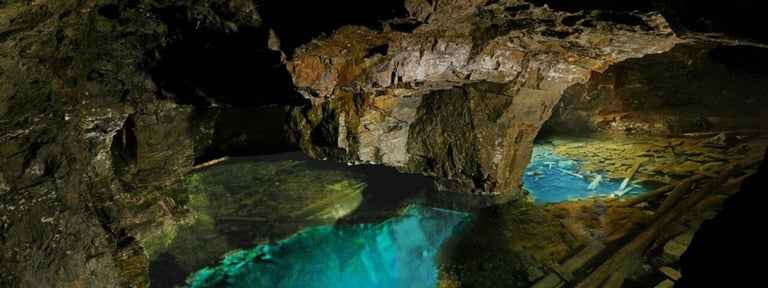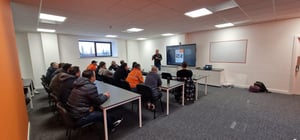Cadence Minerals (LON:KDNC; OTC: KDNCY) has announced the completion of the update of the Mineral Resource Estimate in respect of its investment in the Amapá Iron Ore Project Brazil.
Highlights:
· Mineral Resource of 176.7 million tonnes (“Mt”) grading 39.7% Fe in the Indicated category, reported within an optimised pit shell and using a cut-off grade of 25% Fe.
· Mineral Resource of 8.7Mt at 36.9% in the Inferred category, reported within an optimised pit shell and using a cut-off grade of 25% Fe.
· This Mineral Resource represents a 21% increase in total mineral resources compared to the equivalent MRE published by Anglo American 2012.
· The MRE will form the basis of the mine planning studies within the scoping study, to support the operational plan to produce 4.4Mt of 65% Fe and 0.3 Mt of 62% Fe per annum.
· Significant potential exists to increase the resource base after the completion of metallurgical and optimisation studies on the surficial Colluvium and Canga and the underlying Semi Compact and Compact Itabirite material types.
Cadence Minerals CEO Kiran Morzaria commented:
“We are delighted that, following a significant effort from all involved, Cadence has been able to release an updated Mineral Resource Estimate for the Amapá Project. This significantly builds on our confidence in the economics identified during our internal desk studies and on-site due diligence. The increase in overall mineral resource coupled with the historic operations and iron ore quality provides a robust platform on which to base our ongoing scoping study.
We now look to the future with a palpable sense of excitement, and I would once again like to thank all parties involved in working so hard in the adverse conditions created by COVID to bring Amapá back to life. I look forward to reporting further developments.”
Further Information.
Baker Geological Services Ltd was commissioned by Cadence to prepare a MRE and technical report on Dev Mineração S.A the Mineral Assets Dev Mineração S.A comprising the Amapá Iron Ore Deposit located in Amapá State, Brazil.
The MRE will now form the basis of mine planning and open-pit optimisation studies being carried out as part of our scoping study on the Amapá Project. Wardell Armstrong LLP have been appointed to supervise and prepare the scoping study. As announced previously, the operational plan envisages that the mined material will be beneficiated into a 65% Fe Pellet Feed and 62% Spiral Concentrate at an average rate of 4.4Mt and 0.3Mt per annum.
At the time of writing, the Mining Rights to the Project are held by Dev. Dev is currently under a Judicial Restructuring Plan (“JRP”) which was approved by creditors in August 2019. Under the JRP, there are certain preconditions for Cadence to gain an equity stake in Dev. The remaining precondition outstanding is to reach a binding agreement with the secured bank creditors. After the latter is completed, Cadence will release its monies held in escrow and 99.9% of the equity of Dev will be transferred to a joint venture company Pedra Branca Alliance Pty. Ltd (“PBA”) jointly owned by Cadence (20%) and its joint venture partner IndoSino Pty. Ltd (“IndoSino”) (80%). Cadence’s next stage of investment will be a further investment of US$3.5 million on the grant of all operational and environmental licenses, at which point Cadence will own 27% of PBA. Cadence also has the first right of refusal to increase its stake to 49% in PBA.
Prior to this MRE, the most recent MRE on the Amapá Project was completed in 2012 by Anglo American. The MRE, with an effective date of 29 October 2020, has been reported in accordance with the Canadian National Instrument 43-101 (“NI 43-101”) Standards for Disclosure for Mineral projects. The estimation process followed the Canadian Institute of Mining, Metallurgy and Petroleum (CIM) “Estimation of Mineral Resources and Mineral Reserves Best Practice Guidelines” (CIM, 2019). BGS employee, Mr Howard Baker takes Qualified Person (“QP”) responsibility for the MRE.
To determine the final Mineral Resource Statement, the model has been subjected to a pit optimisation exercise to determine the proportion of the material defined that has a reasonable prospect of economic extraction. This was undertaken by Wardell Armstrong International (“WAI”) with input from Cadence and BGS.
The Mineral Resource Statement generated by BGS has been restricted to the Indicated and Inferred Friable Haematite, Friable Itabirite and Friable Altered Itabirite material falling within an optimised pit shell and using a metal price of 130 USD/tonne for a 65% Fe concentrate. A cut-off grade of 25% Fe has been used for reporting material within the pit shell, this being the operational cut-off grade employed during mining operations.
Using the above criteria, this represents the material which BGS considers has a reasonable prospect for eventual economic extraction potential.
The statements have been classified by Qualified Person, Howard Baker (FAusIMM(CP)) in accordance with the Guidelines of NI 43-101 and accompanying documents 43-101.F1 and 43-101.CP. The Amapá Mineral Resource Estimate has an effective date of 29 October 2020.
The Amapá Project, at a cut-off grade of 25% Fe and reported within an optimised pit shell contains an Indicated Mineral Resource of 176.7 Mt grading 39.7% Fe, 30.0% SiO2, 6.2% Al2O3, 1.2% Mn and 0.17% P and an Inferred Mineral Resource of 8.7 Mt grading 36.9% Fe, 29.4% SiO2, 7.4% Al2O3, 1.63% Mn and 0.44% P (Table 1)
Table 1: Gross and attributable Amapá Mineral Resource Statement reported within an optimised pit and above a cut-off grade of 25% Fe
| Classification | Material | Tonnes | Attributable Tonnes | Fe (%) | SiO2 (%) | Al2O3 (%) | Mn (%) | P (%) |
| Millions | (Millions) (6) | |||||||
| Indicated | Friable Haematite | 0.6 | 0.12 | 58.6 | 12.2 | 1.8 | 0.3 | 0.1 |
| Friable Itabirite | 59.5 | 11.9 | 42 | 33.1 | 3.4 | 0.67 | 0.09 | |
| Friable Altered Itabirite | 116.5 | 23.3 | 38.4 | 28.5 | 7.7 | 1.47 | 0.21 | |
| Sub-Total | 176.7 | 35.32 | 39.7 | 30 | 6.2 | 1.2 | 0.17 | |
| Inferred | Friable Itabirite | 1.3 | 0.26 | 40.4 | 38 | 2.7 | 0.29 | 0.05 |
| Friable Altered Itabirite | 7.4 | 1.48 | 36.3 | 27.9 | 8.2 | 1.87 | 0.51 | |
| Sub-Total | 8.7 | 1.74 | 36.9 | 29.4 | 7.4 | 1.63 | 0.44 |
Notes:
(1) The Mineral Resource is considered to have reasonable prospects for eventual economic extraction.
(2) Mineral Resources, which are not Mineral Reserves, have no demonstrated economic viability.
(3) Amapá has an effective date of 29 October 2020.
(4) The Mineral Resource Estimate was constrained within lithological and grade based solids and within an optimised pit shell defined by the following assumptions; metal price of 130 USD/t of 65% Fe concentrate; iron recovery of 75.4% Fe, Processing costs of 3.67 USD/t dry feed and a mining cost of 1.61 USD/t rock.
(5) Mineral Resources have been classified according to the “CIM Standards on Mineral Resources and Reserves: Definitions and Guidelines (November 2019)” by Howard Baker (FAusIMM(CP)), an independent Qualified Person as defined in NI 43-101.
(6) The attributable tonnes represents the part of the Mineral Resource that will be attributable to Cadence Minerals on the vesting of its initial 20% in the Project, and is subject to the fulfilment of the conditions precedent in the court approved judicial restructuring plan.
The open-pit optimisation shows a strip ratio of 1: 1.14 (ore tonnes: waste tonnes).
BGS notes that the Mineral Resource has a reasonable prospect for eventual economic extraction but are not currently considered Mineral Reserves. Mineral Reserves are estimates of the tonnage and grade or quality of material contained in a Mineral Resource that can be economically mined and processed. To be considered a Mineral Reserve, modifying factors must be applied to the MRE as part of the preparation of a prefeasibility study or a feasibility study as outlined in the CIM Definition Standards. The estimated amount of saleable material contained in the final product must demonstrate a positive net present value using an appropriate discount rate and must demonstrate that eventual extraction could be reasonably justified.
BGS are not aware of any factors (environmental, permitting, legal, title, taxation, socio-economic, marketing, political, or other relevant factors) that have materially affected the Mineral Resource Estimate.
The data used for the MRE update, including drill hole databases, topographic surveys and the previous 2012 Mineral Resource Model, was provided by Dev with the work undertaken by BGS taking place during the global COVID-19 Pandemic and as such, a site visit by BGS has not taken place as part of this update. That said, Howard Baker of BGS visited the Project in March 2015 and understands that no additional technical studies, including exploration drilling, have taken place since this date. At the time of the BGS site visit in 2015, the operation had been on care and maintenance for approximately 12 months. BGS did, however, undertake a full tour of the mine site, the core shed and discussed the Project with Dev personnel, Zamin Ferrous Ltd being the owners of the Project at the time of the site visit.
The Mineral Resource Statement has been limited to the Friable Hematite, Friable Itabirite and Friable Altered Itabirite material types. Historic mineral resources included Colluvium and Canga material within the resource statement, however, BGS noted that during its site visit in 2015 that neither material was being processed and all the material was being stockpiled, and as such both Colluvium and Canga material types have been excluded from the updated Mineral Resource Statement. Similarly, no test work has been undertaken on the Semi Compact and Compact Itabirites, and it has not been demonstrated that a saleable concentrate can be generated from these material types.
Due to the lack of a recent site visit, it has not been possible to undertake any verification studies such as check sampling from the existing core, pit mapping or more detailed studies such as twin drilling and the acquisition of up to date topographic surveys. As such, all data has been taken on face value and verified where possible for obvious errors. All historical protocols have been accepted with the logging, assaying, and associated quality control studies included within this update, as per the previous 2012 Anglo American Mineral Resource Estimate. The 2012 Mineral Resource model has been reviewed by BGS as part of this study and following observations from the site visit in 2015 by BGS, an update to the Resource Model has been undertaken, using the data as supplied.
Data Quality and Quantity
Exploration at the Project commenced in January 2005 with drilling being carried out at various stages up until completion in August 2012.
BGS was supplied with the raw drill data (collars, geology, assay, and survey data) for the Project and generated a desurveyed drill hole file for analysis. In total, the drill hole file generated included 1,046 drill holes for a total of 76,575 m of drilling.
No validation or check sampling has taken place as part of this update with all QA/QC data restricted to that reported in the 2012 Anglo American Mineral Resource Estimation report. However, the processes put in place appear robust and follow standard industry practise and BGS opines that the results provide confidence that the data within the drill hole database is suitable for use in a MRE.
Geological Model
Iron mineralisation at the Amapá Project is hosted within a folded Banded Iron Formation (“BIF”) or itabirite that has been metamorphosed to Amphibolite grade. Granitic pegmatite intrusions crosscut the mineralisation that result in zones of hydrothermal alteration, and tropical weathering of the BIF has resulted in an iron formation of variable oxidation state and competency. The weathering process results in quartz being leached away, leaving an enriched itabirite.
Through an iterative process, the lithological logging codes were used to model the different material type / litho-geochemical domains with the domains being assessed through statistical checks. The statistical relationships observed, based on the modelling of the logging codes, shows that the itabirite system is well understood with the litho-geochemistry representing the logging applied. BGS acknowledges that the modelled lithology results in overlapping grade boundaries, but this is common in deposits with transitional weathering profiles.
The model was created by grouping all itabirite units to create an overall iron formation domain. The iron formation wireframe was then created by applying a trend to the interpretation to consider the overall dip/strike of the Amapá system. The iron formation wireframe was then cut by creating a pegmatite intrusive wireframe.
Various litho-geochemical zones were then created within the iron formation wireframe using the same structural trend as that applied to the overall iron formation. The wireframes were created as a series of intrusives that cut against one another. This method was adopted due to the complex interaction between the differing units because of the weathering system.
Finally, BGS created surface colluvium and canga domains along with the host mica-schist and amphibolite units.
Mineral Resource Estimate
The MRE was completed in Leapfrog Edge and Datamine Studio RM. A composite file was used in a geostatistical study (variography and Quantitative Kriging Neighbourhood Analysis – “QKNA”) that enabled Ordinary Kriging (“OK”) to be used as the main interpolation method. The results of the variography and the QKNA were utilised to determine the most appropriate search parameters used in the grade estimate.
The interpolation used an elliptical search using orientation data from a structural trend used to guide the estimation through areas of fluctuating dip/strike. Grades of Fe, Al2O3, SiO2, P, LOI, CaO, MgO, Mn, P, and TiO2 were interpolated into the empty block model using OK and being based on the determined interpolation parameters and the results of geostatistical study.
Post estimation processes calculated the Slope of Regression to enable an assessment of the quality of the estimate, and a dry density was applied to the model using the moisture content of the different lithologies.
The interpolated block model was validated through visual checks and a comparison of the mean input composite and output model grades. BGS is confident that the interpolated block grades are a reasonable reflection of the available sample data.
Mineral Resource Classification
Based on the work undertaken and the statistical validation steps carried out, BGS is confident that the geological model created honours the understanding of the local scale geology and weathering / alteration controlled grade distribution as accurately as possible given the current data available.
It has not been possible to assess the validity of the QA/QC data presented during the 2012 MRE report. However, the processes put in place appear robust and follow standard industry practise and BGS opines that the results provide confidence that the data within the drillhole database are suitable for use in a MRE. It is however strongly recommended that a detailed sample verification programme be put in place, using existing core or pulps where possible along with a twin drilling campaign.
Density measurements have been taken on a wet basis with moisture being recorded that BGS has used to determine a dry density. BGS acknowledges that recording wet density is common practice in South America, although BGS does not consider this the industry norm. BGS strongly recommends that a density test work programme be introduced, using existing core samples or through in pit test pits.
The data used in the geostatistical analysis resulted in suitably reliable downhole variograms for all zones that allowed the nugget variance to be fixed with robust directional variograms being developed.
QKNA studies were undertaken using the variograms, and suitable estimation parameters were selected through testing alternative sample support and search ellipse scenarios. The slope of regression was calculated, giving an indication of the quality of the estimated grade. Due to the level of sample support, the slope of regression values recorded were considered high and indicative of a good quality grade estimate.
BGS employed numerous validation techniques and is confident that the estimated block grades are a reasonable reflection of the input sample data. Visual and statistical checks showed that very little bias has been introduced.
The Project has been classified as containing Indicated and Inferred Mineral Resources and is primarily based on the quality of the grade estimate and degree of sample support. No Measured Mineral Resources have been assigned due to the lack of independent QA/QC and limited and reliable dry density data.
Resource Potential
BGS recognises an opportunity to assess the potential of the other iron-bearing domains logged and modelled as part of this update. This primarily includes the Semi Compact and Compact Itabirites along with the Canga and Colluvium that was previously included in the 2012 Mineral Resource Statement but has been excluded from this update.
It is recommended that metallurgical test work programmes on all iron-bearing material types are undertaken to assess the upgrade potential.
Canga and Colluvium material above a 25% Fe cut-off and within the optimised pit shell, but excluded from the Mineral Resource Statement totals 49 Mt of Colluvium grading 38.5% Fe, 21.5% SiO2, 12.4% Al2O3, 0.55% Mn and 0.16% P and 6.4 Mt of Canga grading 46.7% Fe, 10.7% SiO2, 11.2% Al2O3, 0.22% Mn and 0.47% P.
On a global basis, and not restricted to a pit shell or cut-off grade, BGS has modelled an additional 800 Mt of Indicated and Inferred Semi Compact and Compact Itabirite that lie predominantly below the existing Itabirite resource. This provides a significant opportunity should future metallurgical and optimisation test work show the material can be upgraded economically to a saleable concentrate.













































